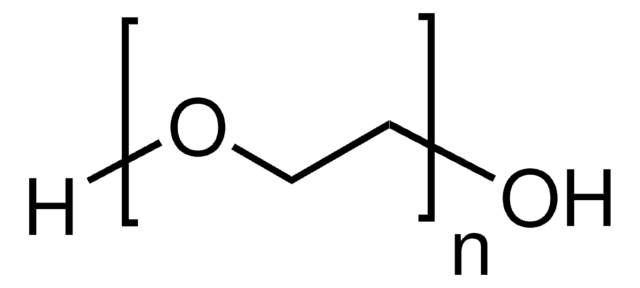8.07491
Polyethylene glycol
6000, for synthesis
Synonym(s):
Poly(ethylene glycol), Polyethylene glycol 6000, Polyglycol, Polyethylene oxide, Polyoxy ethylene, PEG 6000, PEG
About This Item
Recommended Products
vapor pressure
<0.01 hPa ( 20 °C)
Quality Level
form
solid
autoignition temp.
420 °C
potency
28000 mg/kg LD50, oral (Rat)
>20000 mg/kg LD50, skin (Rabbit)
pH
5-7 (20 °C, 100 g/L in H2O)
mp
58-63 °C
transition temp
flash point 270 °C
density
1.2 g/cm3 at 20 °C
storage temp.
2-30°C
SMILES string
C(CO)O
InChI
1S/C2H6O2/c3-1-2-4/h3-4H,1-2H2
InChI key
LYCAIKOWRPUZTN-UHFFFAOYSA-N
Looking for similar products? Visit Product Comparison Guide
Related Categories
General description
Application
Analysis Note
Melting range (upper value): ≤ 64 °C
Hydroxyl value: 16 - 23
Average molecular mass: 5000 - 7000
Identity (IR): passes test
Storage Class Code
10 - Combustible liquids
WGK
WGK 1
Flash Point(F)
281.5 °F - closed cup
Flash Point(C)
138.6 °C - closed cup
Certificates of Analysis (COA)
Search for Certificates of Analysis (COA) by entering the products Lot/Batch Number. Lot and Batch Numbers can be found on a product’s label following the words ‘Lot’ or ‘Batch’.
Already Own This Product?
Find documentation for the products that you have recently purchased in the Document Library.
Customers Also Viewed
Our team of scientists has experience in all areas of research including Life Science, Material Science, Chemical Synthesis, Chromatography, Analytical and many others.
Contact Technical Service
